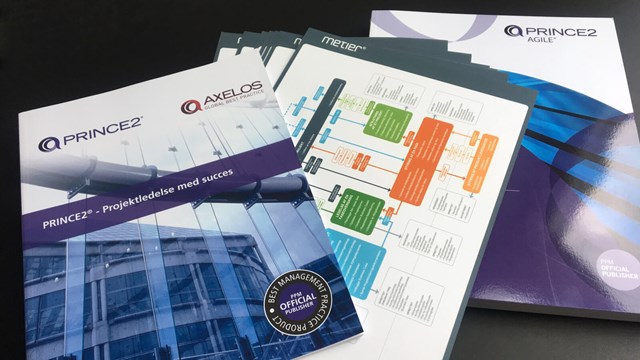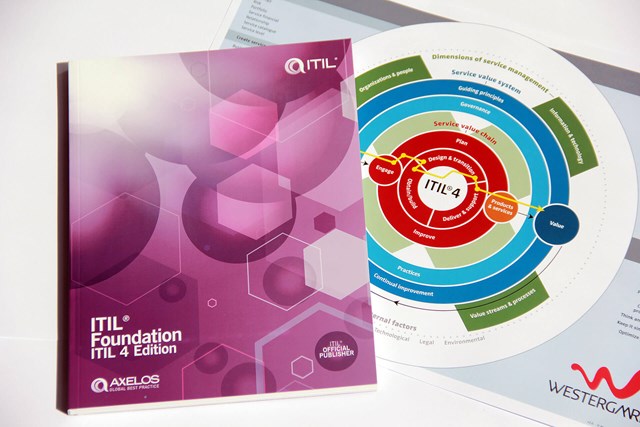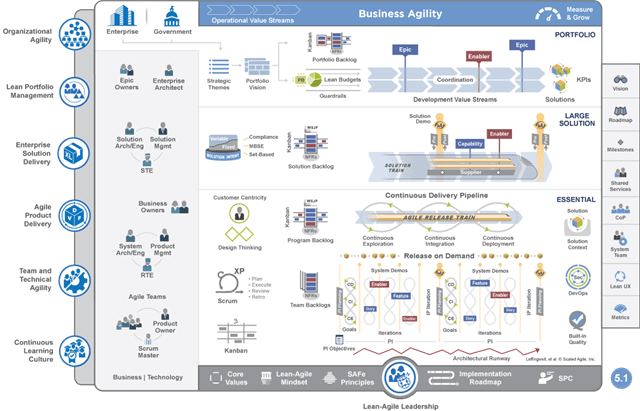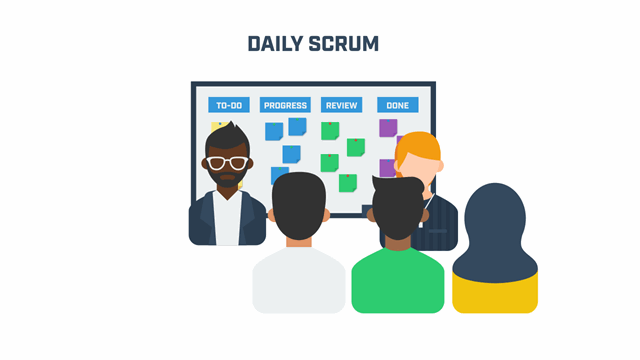Book shop
Buy books directly from us!
If you want to buy books within ITIL®, PRINCE2®, Scrum or similar, you can find them with us and buy them at favorable prices.
Remember that on several of our courses the books are included in the price!
Buy books directly from us!
If you want to buy books within ITIL®, PRINCE2®, Scrum or similar, you can find them with us and buy them at favorable prices.
Remember that on several of our courses the books are included in the price!

PRINCE2® is an internationally recognized project management method that can be used in all organizations across industries if you want more efficient project execution and consequent increased business results.
PRINCE2® is used today in more than 150 countries by both private and public organizations. PRINCE2® is recognized as the leading project management method, and the number of people being trained in PRINCE2® is increasing.
PRINCE2® is also widespread in Denmark. Since 2002, approx. 10,000 take a PRINCE2® exam in Denmark, and more than 100,000 take a PRINCE2® exam worldwide per year.
In Denmark, MetierWestergaard educates more than 30% of everyone who takes a PRINCE2® exam.

ITIL stands for Information Technology Infrastructure Library. ITIL is a set of best practice processes for providing IT services to customers (exes or internal).
The underlying idea is to increase the IT value of the business by adapting IT processes to business needs.
ITIL is a globally recognized method and certification. It provides you and your company with a framework for best practices to achieve quality, service and avoid problems that can happen and often occur in IT systems.
ITIL is the most widely used method of IT Service Management in the world. It helps identify, plan, deliver and support business IT services
ITIL enters into the organizational structure and professional skills of an IT organization by presenting a detailed set of management procedures that an organization can use to manage its IT operations. These procedures are vendor independent and relevant to all aspects of an IT infrastructure.
The ITIL structure can help organizations build and improve an effective IT Service Management organization. The framework can support the IT organization in expanding the business and thus adds direct value to the business processes as the business grows.

SAFe® stands for Scaled Agile Framework and is the leading agile framework for development projects in large companies. SAFe is thus a framework that creates common principles and language in the agile organization
At team level, SAFe is in principle the same as Scrum, namely self-organizing teams working in short iterations. But in addition, SAFe addresses both the Program and Portfolio levels. The program level synchronizes up to 10-15 Scrum teams in one Agile Release Train. The portfolio level distributes budgets between Agile Release Trains, as well as matures and follows up on the company's major initiatives. An SAFe program, or Agile Release Train (ART), typically consists of 50-125 people, and several Danish companies have 10 or more ARTs running.
Since the launch of SAFe 1.0 in 2011, there has been a new major update of the framework almost every year. This year we are up to 5.0 and there is again an incremental improvement. SAFe 5.0 was launched at a time when SAFe was beginning to become mainstream.
Until now, however, SAFe has primarily been used in IT organizations. It has gone really well in many places, but at some point these organizations are starting to hit into limits. Of course, one can continue to optimize and improve its ARTs, but the great potential lies elsewhere, namely the spread of SAFe beyond IT. But why now? Yes, the vast majority of organizations experience that the IT organization cannot be seen as an isolated entity - with digital transformation we look into a reality where IT is an element in the entire business. And therefore SAFe must reach beyond the walls of the IT organization.
SAFe 5.0 kicks off this journey with Business Agility

Scrum is an agile method, which is based on a set of agile principles. The agile approach is based on a step-by-step and iterative approach.
The agile method is based on a step-by-step and iterative approach. In the agile method, an iteration is perceived as a time-limited project cycle (eg 2 weeks sprint), where an inter-organizational team, based on a list of priority needs and requirements, designs and develops elements that have been tested and ready to be part of it. finished solution. This list is called a back-log.
Basically, scrum requires a scrum master which creates an environment where:
Inspiration: Software in 30 Days by Ken Schwaber and Jeff Sutherland